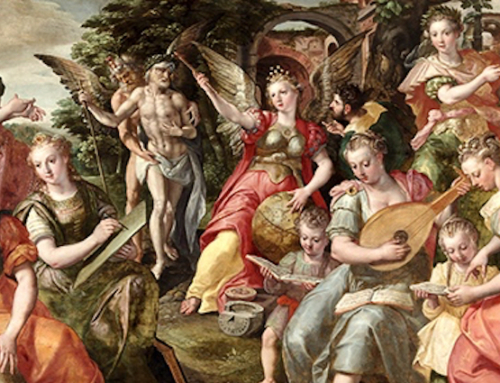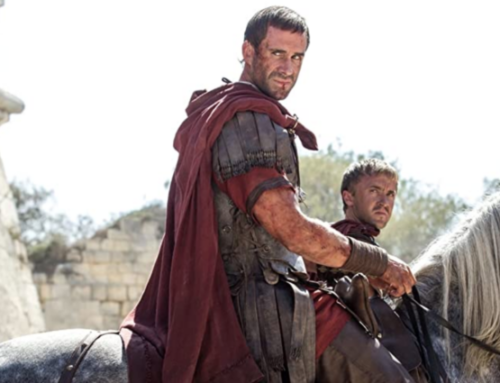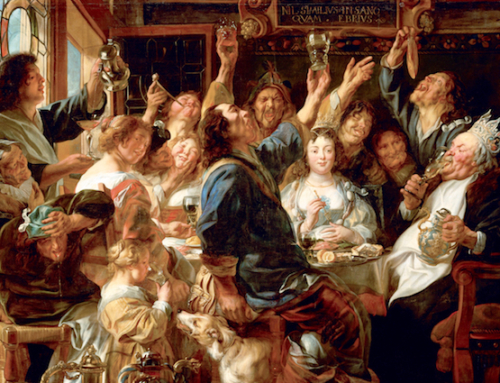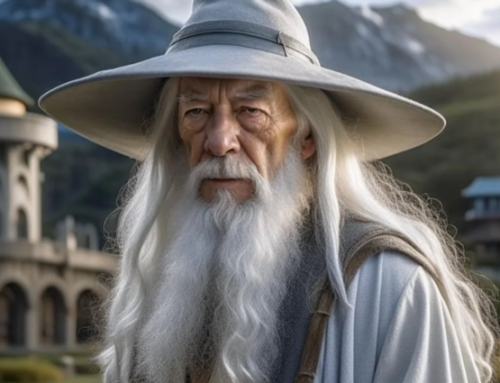A couple of nerds, one of them a wannabe jock, have been making minor headlines in such classy publications as Slate, running the old “let’s ban college football” canard up the flagpole. Malcolm Gladwell and Buzz Bissinger, supposedly well-known writers (but, thankfully, ones I had never before heard of) “won” a debate against former NFL defensive end Tim Green and Fox’s Jason Whitlock on the subject a few weeks ago, setting off a tremor that was probably felt all the way from Slate to the Huffington Post.
Having read John J. Miller’s fine book, The Big Scrum: How Teddy Roosevelt Saved Football (see review) just about the time the “debate” took place, I am reminded that anti-sports (along with anti-Catholicism) is still the anti-Semitism of the chattering classes. In fact, sports, whether of the “violent” or “non-violent” types (more on that in a minute) are as hardwired into our natures as any other element of the True, the Good, and the Beautiful. Like it or not, gladiators are as perfect a representation of God’s Creation as composers, artists, or even priests.
The wording of the debate doesn’t matter much. The arguments have never changed, except to employ newer technological terms. Football repels squeamish types, who also have a particular distaste for rugby, bull fighting, and NASCAR. But in my seven-decade experience with sports of all kinds, I have found that all of them are equally violent. My mother, a double Life Master in Bridge, was among the most bloodthirsty competitors I have ever known. Carmine Basilio, one of the gamest welterweight boxers in the history of the sport, was in person a sweet and gentle man; on the other hand, I would not want to have met up with chess master Bobby Fischer in a dark alley. Sports are war, and war is as much a part of us as prayer.
Sports reflect cultures, and also help to define them. The three most watched American sports — football, basketball, and baseball — are marked by peculiarly American traits: lots of standing around, punctuated by bursts of violent action. The violence that each requires makes it impossible for the action to continue nonstop (a pitcher, for example, simply cannot throw every ball as hard as he can; a running back cannot collide with every opponent he comes across; a basketball player cannot run up and down the court at full speed for very long), so elaborate and arcane rules are necessary to show off the violence to maximum effect and to call attention to the beauty of motion that is inherent in every battle. I once saw David Bing, now mayor of Detroit, jump from the foul line in Manley Field House in Syracuse, New York, spin with the grace of a Bolshoi dancer, and jam the ball into the basket backwards, with two hands. It was a moment no less joyful than one’s first sighting of Michelangelo’s David. Such moments are, of course, very rare; thus the necessity of many pauses in between the bursts of action.
Most people, even avid sports fans, do not know that the three signature American sports were all invented and developed in New England. Football was the earliest, played informally at colleges from about the 1780s. Baseball is mistakenly credited to Abner Doubleday (he was one of many founders) but was a pretty well developed college game by 1850 or so. Basketball came from the mind of James Naismith in Springfield, Massachusetts — whatever you think of the peoples’ republic now ruling the lives of ancient puritans, the state did indeed give us a rich sporting heritage. It’s no accident that Boston still has the oldest major league baseball stadium, or that its basketball team is called the “Celtics.”
Baseball was the perfect village game. It takes only a ball, something to hit it with, something to catch it with, and quite a bit of open land, not necessarily developed or groomed. I played maybe 2000-3000 games on empty lots, parks, and farmers’ fields around Phelps, New York from 1945-1955. We had a “town team,” as did every village in America during those years. Families would turn out on Sunday afternoons with picnic baskets, and the boys and men who played on those teams were heroes. I was the youngest town team player in our league one year — because the regular third baseman hurt his knee in the first game of the season and coach couldn’t come up with anyone better than a 15-year-old who had just finished his freshman year of high school. I don’t remember playing very well, but I was cool among my peers for a while. Television and interstate highways eventually displaced the town teams, but for a couple of generations they were a force for good and the source of many local legends.
Football was also a good village game, but developed mostly at colleges where there was a source of funding and built-in spectators. Eventually it became the ultimate corporate game, requiring big stadiums and big money. Baseball came out of the town, football from the college. It produced 100,000 seat stadiums by the 1920s, a decade in which more people knew the name of Red Grange than of Lenin, Stalin, or Mussolini. On the day my grandfather Willson died, my Dad told me that he had asked his father in 1925 for fifty cents, the price of admission to the Red Grange barnstorming game in Buffalo. One of Dad’s friends had a Model T, which promptly broke down just outside of Buffalo. By the time they got to the stadium Red Grange was finished playing for the day. Thirty-four years later, my Dad still felt guilty about taking his father’s fifty cents, but such was the power of football. And such was the reason that the inheritors of a gladiatorial game must keep reigning it in.
Basketball seems to be topped off by the movie Hoosiers, but it became by about 1955 an urban game. Willie Mays played stickball on the streets of New York, but his was the last generation that did. Basketball takes little space and little money. The NBA was founded in 1949, and despite the fact that there was almost no racism in its early years, it took about ten before the Negro kids (that was the preferred name then) began to be its major force. The black boys from the south got into college football in their native region about the same time that baseball desegregated, and for a while dominated the major sports, each one in its turn, not yet played out in professional football and basketball.
Gladiators often come from the conquered or the oppressed groups — that is, the gladiators who get paid for what they do. But most athletes are middle class kids who want to have fun. The fun they have sometimes leads to excess, and sometimes even to haughty attitudes towards people who don’t value their muscles or their speed or their willingness to absorb a considerable amount of physical pain. In fact, there often seems to be a natural animosity between people who are excessive athletes and those who are excessive intellects or artists. There needn’t be. I have spent a lifetime balanced on the top of an invisible fence between the world of the nerds and the world of the jocks, loving both sides, trying to interpret them to each other, being utterly unwilling to fall one way or the other.
Men and women who love their games, in fact, are much like those who love their arts. Does it surprise you that Roosevelt Grier, a great defensive tackle, was also extremely proficient at needlepoint? Or that an esteemed physics professor of mine loved nothing better than figure skating and hockey (he was terrible at both) and saw them as a high expression of his discipline? Or that great poets are often as crude as dragon-mouthed gladiators? Imaginative conservatives would be well served to understand how close it is in the human soul to write a good sentence and to get across the goal line.
And don’t expect college football to be banned any time soon.
Books mentioned in this essay may be found in The Imaginative Conservative Bookstore.








Mr. Willson,
Thank you for crediting New England for generating the American sports trinity: baseball, basketball, and football. We Yankees often get kicked around in contemporary discourse for numerous cultural and political transgressions, but a quick look at American history reveals that, even beyond sports, we started most everything of value in this country, including good old fashioned public debate (we of town greens and meeting houses).
Speaking of debate, gladiators were slaves, and much of the local, amateur spirit of athletics, as you acknowledge, is held captive by the corporate world. Money, money, money. All is money. Both athletes and fans suffer because many administrative decisions–when to televise games, where to hold sporting events, whom to penalize for behavior that is more a symptom of competition than a sign of poor character–depend on cash. I know, I know: money makes the world go 'round, and I like it as much as the next person, but when it costs a family of four 436 dollars to attend a MLB game at 1:30 P.M. on a Wednesday (our recent outlay for tickets to an August game at Fenway Park), I have to challenge the CEOs on their mission. Granted, I agreed to the ticket price to give my children a quality experience at the home field of their favorite team, and that's how transactions work in a free market, but that August game will be the only one we see this summer. We'll catch the rest of the games on TV–at least the ones whose broadcast rights are owned by the channels we receive through our cable company.
The money is a problem, since Colleges are used as a minor league by the NBA and the NFL, and many of the colleges do not make money on their teams, but they are funded by taxpayers. Secondly, even if the colleges do make money, and some make a lot of money, in the tens of millions, the "student" athletes are barred from getting any of it, meaning they can get injured and lose a chance a pro career and get nothing, or in many cases, a sham education, in return. The honest way would be to force the professional teams to actually subsidize their own minor league instead of using taxpayer funded facilities. The second problem with football, is that the game is not available to all children, the way Rugby or Soccer is. The weight, size, and equipment makes it not only dangerous, but difficult for young children to find their place if they are small, thin, and better at skills rather than brute force, meaning the participation level is not good for football. Rugby, on the other hand, has both small and large players, fast and slow, ones who can Kick and ones who cannot, and all of them have to think and act quickly on the fly. Will it replace football? Of course not. But at the school level, it makes more sense to fund a sport which can have a bigger participation for less money. This is true of both soccer and rugby. ITs possible through school budget cuts to encourage more kids to play safer, more well rounded, and cheaper sports than american football, especially if most parents wont let their children play football, and if most children do not want to play it because they are not built for it. Of course there will be an outcry, but as a former collegiate wrestler, Im pretty sick of the football players eating creatine and steak and flying everywhere and staying at hotels when the superior athletes, the wrestlers, rode in broken down vans and slept on gym floors. And the rugby players often pay all their own way for the love of the game. Football players are way too spoiled to be "gladiators". They should try a true gladiator sport like boxing or wrestling. I dont consider maiming people with helmets who are not looking the way they do in football to be a true honest tough guy contest.
Mr. Cote, my wife and I used to take our three daughters to Busch Stadium in St. Louis for $15–and that included parking, tickets, pop, and beer. We sat in the bleachers, where the real fans were–the older black gentlemen who put our daughters on their laps and explained to them what was happening. I saw Bob Gibson pitch nine times in the year he had a 1.12 ERA. It may not surprise that, although I am still a great baseball fan, I have not been to a game since Tiger Stadium closed, precisely because of the $436 you mention.
Mr. Griffcats, a couple of points. First, I did not and do not defend the system you are talking about. I don't believe that citizens should fund stadiums for billionaire sports owners, nor for Leviathan University. My college raises every nickel for its sports programs, and sponsors them for the value they provide for the mission of the school. Your prejudice in favor of "safer, more well rounded, and cheaper sports than American football" is exactly the attitude I am arguing against. You simply want to put your own preferences above what is indigenous to the culture. If I had my way, I would ask soccer fans to watch eggs boil, which is much more exciting, but that is just, and only, my opinion, and a couple of billion people around the globe disagree with me. Your comments about football show me that you probably never played it. I did, for about ten years, and also played rugby for seven. I also played lacrosse, which I consider to be the purest sport I know, but there is one thing I would challenge anyone to dispute. Football is simply the toughest gladiatorial game now in existence, padding or no padding, helmets or no helmets. But read my essay again: violence takes many forms, and getting an ACL torn is sometimes more humane than what chess players do to each other.
Mr. Cote, my wife and I used to take our three daughters to Busch Stadium in St. Louis for $15–and that included parking, tickets, pop, and beer. We sat in the bleachers, where the real fans were–the older black gentlemen who put our daughters on their laps and explained to them what was happening. I saw Bob Gibson pitch nine times in the year he had a 1.12 ERA. It may not surprise that, although I am still a great baseball fan, I have not been to a game since Tiger Stadium closed, precisely because of the $436 you mention.
Mr. Griffcats, a couple of points. First, I did not and do not defend the system you are talking about. I don't believe that citizens should fund stadiums for billionaire sports owners, nor for Leviathan University. My college raises every nickel for its sports programs, and sponsors them for the value they provide for the mission of the school. Your prejudice in favor of "safer, more well rounded, and cheaper sports than American football" is exactly the attitude I am arguing against. You simply want to put your own preferences above what is indigenous to the culture. If I had my way, I would ask soccer fans to watch eggs boil, which is much more exciting, but that is just, and only, my opinion, and a couple of billion people around the globe disagree with me. Your comments about football show me that you probably never played it. I did, for about ten years, and also played rugby for seven. I also played lacrosse, which I consider to be the purest sport I know, but there is one thing I would challenge anyone to dispute. Football is simply the toughest gladiatorial game now in existence, padding or no padding, helmets or no helmets. But read my essay again: violence takes many forms, and getting an ACL torn is sometimes more humane than what chess players do to each other.
Well as to which sports are tougher, I would say that it is individual effort that determines the "toughness" and it cant be compared easily person to person or sport to sport. I am more inclined to think that wrestling and boxing are the toughest, because they combine the psychological pressure of free form adaptation by quick thinking with the fact you are one on one and can have no excuses. Further, the punishment for your mistake is immediate, physical, and brutal, and you can't say time out or stop to rest, so the beating continues until you are out. They also both require food and water deprivation for days on end, wrestling more so than boxing. In college, I used to doze sitting up in the shower at night because my skin was burning from dehydration. Three University of Michigan wrestlers died a few years ago in that condition.
I think my opinions about football are from the other side of the issue. I was raised in the midwest, in the north woods, where picking rocks by hand and putting up hay without machinery for 12 hours in the hot sun was considered a normal day for a teenager. Since football does not require endurance, at least not like sports such as wrestling and boxing, or farm work, the things I did in the country, I tend to think of it as an easier sport if you are big enough for it.
In that sense, football was to me, growing up, a suburban kids sport, not a farm kids sport. We played baseball, and if you were "tough" you boxed, fought, and wrestled. Football wasn't available to us, it was the city and college families that played it. Baseball was the team sport, fighting was the other one. Workouts were picking rocks, building calf barns and baling hay.
After college, of course, I changed. I gravitated toward wrestling, and now Mixed Martial Arts, because I boxed and wrestled, as the tough sports, and soccer as the team sport. Yes, football is deep in the american culture, but I was never in that part of the culture. Long hard days of work and individual toughness and decision making seemed to have nothing to do with the football kids, whom I saw as privileged with the best facilities, training, and food. So I would say that even though I agree with people like Malcom Gladwell who could almost seem to have an unamerican attitude towards football, I come from the other side of the issue, and have nothing in common with him OR the football players. Growing up, I saw American football as more for the fat city kid (of course, that's the samll town amateur view and has nothing to do with the realities of truly competitive football). I guess that puts me closer to a Mexican bean picker than someone with a graduate degree, but oh well it might explain my lack of career advancement. But I do want to see football players running across a dirt field in the hot sun for twelve hours with nothing but a sip of water and a bowl of cereal, then go into town and start a fight. And of course, get up the next morning for church. Im sure some football players could do it of course, and I would like them more for it. I guess such a silly point of view should disqualify my opinions altogether, but I cant help it, my father raised me in the hills. I guess no one is going to do what I did anymore anyway, that era seems to be gone the way of my grandfather.
Mr. Griffcats,
You may be surprised that I actually like your comment, and you may be surprised that the tough life you talk about is exactly what describes football players in the little town where I grew up. We played tackle football with no pads and no protection, in a lot where one end zone was a gravel driveway and one sideline was a concrete sidewalk. It was also the fashion in those days to deprive high school football players of water–which does not promote toughness, of course, but death. My Dad played for the Philadelphia Eagles at a time when there were still professional players who refused to wear a helmet. All our farm kids played football, except one who was busy getting rich on his own land at the age of 16. I never wrestled, although my youngest brother did, and two of my nephews were New York state champions. It is indeed a demanding sport, as is boxing, as is distance running, for that matter. I saw soccer players at St. Louis University (perennial national champs in those days) go through workouts that would cause many NFL linebackers to cry. But there is still no test of strength, speed, and courage that compares with the raw violence of football played well and played within the rules. It is true that all sports now have been commercialized, over-organized, and hurt badly by the trends. I don't think I would play nowadays, with coaches and parents and umpires all shouting in the ears of small boys who just want to have fun. Some sports, of course, appeal to groups trying to (literally) fight their way up the social pecking order; boxing being the classic case. Others are simply suited to the culture, and that's what I'm getting at.
I’ve played pretty much every team sport available to me (which excludes ice hockey and lacrosse, but includes tons of football and soccer, and rugby, and boxing, and . . .). From my substantial, direct experience, American football isn’t in the same universe as rugby union (from which it developed) in terms of the roughness of the game or the toughness or conditioning required of the players. I know whereof I speak here.Not the main point of imterest here, I am sure, this comparison. Excpt for me.